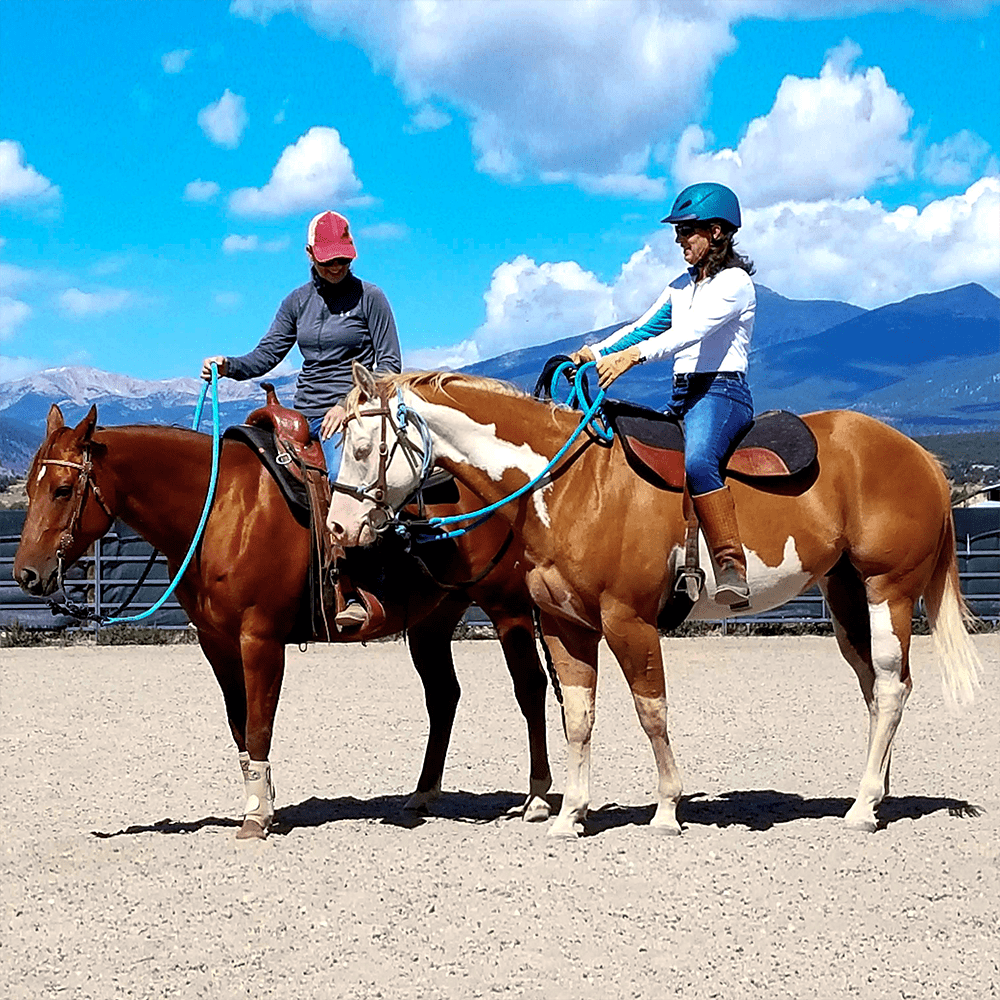Question Category: Issues from the Ground
Question: Hello Julie,
Your Incident article has prompted me to write. Thank you for stressing the dangers of pullers, and the comment of kissing a horse on the muzzle (one of my pet peeves this last year). I’ve been looking for more information on horses that pull back and what can be done to train them not to do so. In our operation we use high lines extensively, and it may be because of this I have no experience with pullers. The question in my mind is – do horses that spend a lot of their time on high lines not develop the tendency to pull back, or can high lines be used to reset the mindset of a puller? Fortunately, I don’t have any pullers to try this out on. Have you had any success in using high lines for this problem? Or perhaps some one else has the experience to enlighten me. On the issue of kissing – I’ve given clinics on horse management in the backcountry and seen people do this!! It’s so confusing for the horse to have someone show such submissive behavior to them, then try to be the boss. I’ve encouraged people to understand what they are doing from the horses’ perspective and instead of talking against the impulse to kiss their horse I encourage a realization that where you kiss the horse is important. They’ll respect you more the further back on their body that you place your kiss! Hey! it’s their perception that counts!
Jim
British Columbia
Answer: Hi Jim,
Thanks for your email. I am glad to hear you enjoyed the article. Pulling back can be a real problem and it is quite possible that horses on a high line would be less prone to pulling, since they would not have the sensation of being affixed to a solid object. I have studied a lot of veterinary textbooks on horse behavior but have seen little or no information on pulling, so I’ll give you my own personal opinion.
There are two types of pullers, obstinate pullers and panic pullers. The former are horses that have learned that they can break a rope or halter and get loose. They are pretty easy to spot because they will test the rope and pull back in short fits, being fairly calm and relaxed between pulling attempts. Generally once they determine that they cannot break the rope or halter, they quit pulling. A panic puller is a whole other story. These horses may stand tied for weeks on end and then suddenly something triggers their flight response (usually a human crowding their face) and once they discover their flight response is not available to them (because they are tied) a sheer panic sets in. The panic is very obvious in these horses as their eyes get big and the they will stop at nothing to get away. Often these horses shut down and sit back on the rope and freeze up. The only thing you can do to relieve them is to get the rope untied or cut the rope. Horses can do severe damage to their necks and backs in pulling episodes.
Panic pulling is very common in Thoroughbreds and I believe this is because we have bred these horses for hundreds of generations to do one thing: run. Therefore the flight response in TBs is very strong. I have had many TBs that could not be tied but otherwise were very compliant and obedient horses and would stand willingly all day long at the hitching rail with the rope just looped around it. If the flight response is triggered and they can move away, they do not panic.
When I was younger (and dumber) I was under the illusion that if panic pullers were trained right, they wouldn’t pull. I was working on a TB breeding farm and one year we had a very nice yearling filly (the cream of that year’s crop, a grand-daughter of Bold Ruler) that was a puller. By George, I was going to break her of that so I found a big fat rope, a strong halter and a strong post and tied her up. She fought and fought and then reared up, turned up side down and hung from the rope with her neck twisted and suspended in the air. I cut the rope and she lay there, stiff and unmoving, shaking all over, with her eyes rolled back in her head, and I could not get her up. I was sure she had broken her neck. As I looked out my office window at her, waiting for the vet to answer the phone and thinking how I was going to explain this one to the owner, she leapt to her feet, shook off, stuck her tail in the air, and took off at a full run! I considered this an inexpensive lesson and since that time I have accepted the fact that some horses will just never tie.
But I do think the obstinate pullers can be rehabilitated with the above method. Also, I have seen overhead devices for tying pullers, which make them less likely to pull because they never hit a fixed object (which gives credence to your high-line theory). We use a tie-clip, the Safe Clip, that is good for for pullers and if they pull, they get a slow release on the rope, which keeps the panic from setting in.
One caveat about tying horses that fight the rope: if they bruise their poll (a highly sensitive area) this may exacerbate the pulling problem. The “Be Nice” halters are made of narrow nylon rope with metal knobs at the poll, specifically made to put pressure on the poll to encourage the horse not to pull. This will work well on an obstinate puller but will make a panic puller much worse since pain is added to the panic.
I do think that a horse would be less likely to pull on a highline because there would be a fair amount of give and there is nothing fixed for him to pull against. However, if one horse did start to pull it could set off a chain reaction of pulling since panic in one horse will lead to panic in another (a simple fact of herd behavior, horses tend to act like the horses around them). That is another reason why most trail operations will not keep a horse that pulls. I’ll be interested to hear from our other trail operators to see what they think of pullers.
Julie Goodnight
Copyright ©Julie Goodnight 2000. All Rights Reserved. No part of this website may be reproduced without owner’s express consent.

